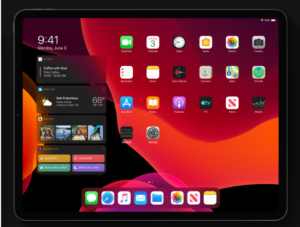In 2010, Steve Jobs stopped usage of Adobe Flash from the iPhone. Why? It was not secure, it was fully proprietary, required a lot of power, and did not accommodate for a touch platform. All of those reasons turned out true for the era of mobile devices and finally Adobe announced that they are doing away with Flash.
In the official statement from Adobe in July 2017, they stated “In collaboration with several of our technology partners – including Apple, Facebook, Google, Microsoft and Mozilla, Adobe is planning to end-of-life Flash. Specifically, we will stop updating and distributing the Flash Player at the end of 2020 and encourage content creators to migrate any existing Flash content to these new open formats.”
Why is Flash being put to rest?
Let’s take a moment to reflect upon Flash while it slowly fades away into the sunset.
It isn’t secure
Adobe has been rigorously criticized for a while because they’ve had security flaws crop up from time to time. Flash offers very little security and has constantly been subject to hacking and malware threats.
It isn’t open and it’s obsolete
The real big knock against Flash is the fact that it is rather obsolete. Developers have already moved on from Flash over the last few years, using open technologies that achieve the same ends without suffering from security failures or browser incompatibility. Even Adobe has invested in HTML5, and has encouraged moving in that direction since 2015.
It consumes way too much power
Mobile devices must decode video in hardware because decoding in software takes up too much power. The video on almost all flash websites require an old generation decoder, which mobile chips do not have and hence must be run in software. This could reduce the battery life by 50 percent which is has an enormous impact on usage.
Then there’s the problem of Touch
Flash was designed for PCs and this poses many problems for touch screens. An example of this is mouse rollovers, which show up content when the mouse arrow hovers over the screen. Most Flash websites will need to be rewritten to support touch-based devices. If these are to be rewritten anyway, it would definitely be better to use modern technologies like HTML5, CSS and JavaScript.
What does this mean for your website?
Between now and 2020, websites need to figure out how to deal with all their Flash content. If your website still has Flash elements, consider using HTML5, which gives you the same level of interaction and complex animations as Flash. You can easily get web developers to help you and your website will not notice any difference. However, if your website is built mainly in Flash, you will need a complete redesign.
Open standards like HTML5 have become better over time, and most now provide many of the capabilities and functionalities that plugins offered and have become very workable alternative for content on the web.
Have a look at how we helped Scootle convert their flash resources.
All in all
No need to worry about Flash going away. The web will certainly be much safer, faster and smoother without it.
.svg)









